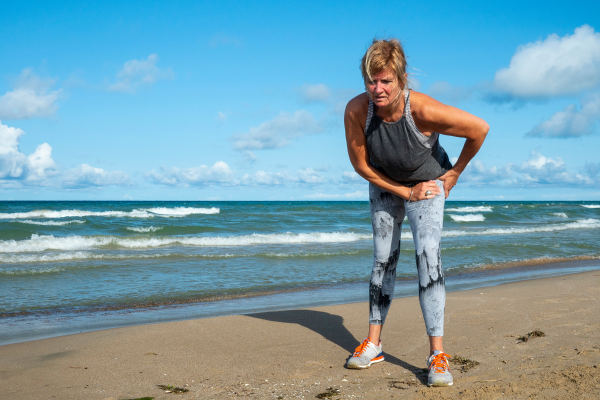
Hip dysplasia (developmental dysplasia of the hip – DDH) is a condition that affects the hip joint. In a healthy hip, the ball of the thighbone (femur) fits snugly into a cup-shaped socket in the pelvis. In hip dysplasia, the socket is underdeveloped or shallow, causing the ball to slip partially or completely out of joint (dislocation). This can occur in one or both hips and can be present at birth (congenital) or develop in early childhood.
Understanding Hip Dysplasia
There are several factors that can contribute to hip dysplasia, including:
- Genetics: A family history of hip dysplasia increases a baby’s risk.
- Breech position: Babies born breech (feet first) are more likely to have hip dysplasia.
- Swaddling: Tight swaddling that keeps the hips straight may increase the risk.
Symptoms of Hip Dysplasia in Babies
Early detection and treatment are crucial for a good outcome. Here are some signs to watch for in babies:
- Uneven leg folds – One leg crease may appear higher than the other.
- Clicking sound in the hip – A snapping or clicking sound during hip movement may be present.
- Limited hip movement – Difficulty spreading the legs wide or resistance when moving the hips.
- Leg length discrepancy – One leg may appear shorter than the other.
Symptoms of Hip Dysplasia in Adults
Hip dysplasia can also affect adults, although it often goes undiagnosed in childhood. Symptoms in adults may include:
- Hip pain, especially on the affected side
- Difficulty walking, limping, or a feeling of instability
- Decreased range of motion in the hip
- Early onset of arthritis in the hip joint
Diagnosing Hip Dysplasia
Diagnosis of hip dysplasia depends on the age of the patient. In babies, a physical examination and manoeuvres to assess hip mobility are often used. Ultrasound is the preferred imaging test for infants. X-rays may be used for older children and adults.
Treatment for Hip Dysplasia
Treatment for hip dysplasia varies depending on the severity and the age of the patient.
- In babies: Treatment usually involves gentle manipulation of the hip joint to place it in the correct position (closed reduction) followed by a harness or splint (Pavlik harness) to keep the hip in place for several months.
- In older children and adults: Treatment options may include traction, surgery (osteotomy), or hip replacement depending on the severity of the condition.
Living with Hip Dysplasia
With early detection and treatment, most babies with hip dysplasia can achieve normal hip development. In adults, treatment can help manage pain, improve mobility, and prevent further complications.
Additional Tips
- For parents: If you have any concerns about your baby’s hips, talk to your pediatrician immediately. Early diagnosis and treatment are key for a good outcome.
- For adults: If you experience hip pain or have difficulty walking, consult a doctor to determine the cause and discuss treatment options.
- For everyone: Maintaining a healthy weight and exercising regularly can help to reduce stress on the hip joint and improve overall health.
By understanding hip dysplasia and its symptoms, parents and adults can be proactive in seeking diagnosis and treatment, leading to a better quality of life.


